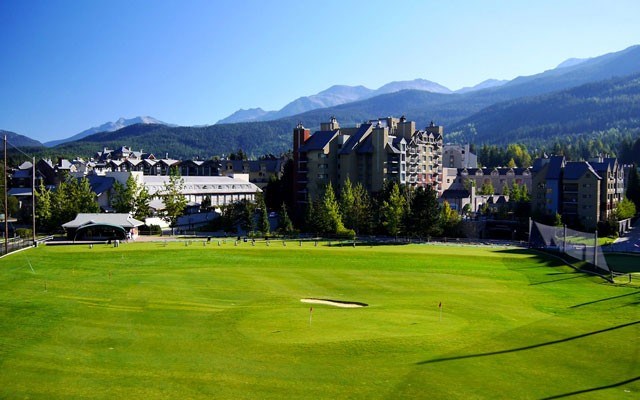Whistler businesses are regularly recognized as environmental leaders.
It's time to tally up another one, as Whistler Golf Club announced last week it has received Audubon International certification after completing the Audubon Cooperative Sanctuary Program for Golf Courses.
Whistler is the second course in town to receive the certification, as the Fairmont Chateau Whistler Golf Club was one of the first Canadian courses to set the standard, initially receiving it in 1998 and recertifying in 2011. In all, 95 courses in Canada and 901 overall have passed the test.
Receiving the certification means courses met or exceeded standards for "protecting water quality, conserving natural resources and providing wildlife habitats," according to the Audubon International website.
General manager Alan Kristmanson feels having the certification in hand will be a plus in the eyes of golfers seeking out a course.
"Our customers want to know that we're stewards of the environment. I think that's becoming important for all of us with how we're living our lives," he said. "Our industry, for the most part, has had a reputation of not being good for the environment and it's something we're trying to turn around."
Assistant superintendent Stu Carmichael explained the biggest projects for the team were to improve the course's bear corridors, providing bears with a place to go even when the course is in use, and ensuring the high quality of Crabapple Creek to protect the Kokanee salmon and rainbow trout, though in several areas, he said complying wasn't necessarily a lot of extra work.
"A lot of the things, we've been doing for a long time but not necessarily monitoring them or taking note of it besides knowing we were doing the right thing," Carmichael explained.
Longtime golfers at the course won't see a lot of change when they hit the links for the first time this season, as the certification is earned over a five-year period and several of the adjustments have been made over several seasons. One has been reducing the amount of the course that is playable – including creating a buffer near Crabapple Creek – cutting machinery, fertilizer and fuel usage in the process.
"In some areas, we did have to convince and educate the golfer on why we're doing it and why there's now some shrubs and taller grass around the ponds," Carmichael explained. "Once you take the time and educate and talk to the membership and our passholders, it all starts to make sense in the bigger picture."
For what is ostensibly a luxury, Kristmanson acknowledged maintaining a golf course can suck up important resources. However, there is a movement afoot to encourage the "browning" of courses, which can benefit the environment in more ways than one.
"To keep turf green requires a lot. It requires a lot of water. It requires fertilizer," he said. "So we're working at lessening the amount of water, for one example.
"That might mean, at times, areas might be a little bit browner than normal."
He also noted that disease in the turf is more likely to thrive with greater water application, and chemicals would need to be applied to remedy that circumstance.
In 2010, Kristmanson added, the course installed sprinklers that can run independently of one another, reducing water usage.
Kristmanson added the course must submit reports every two years and will be monitored in order to maintain the status.




